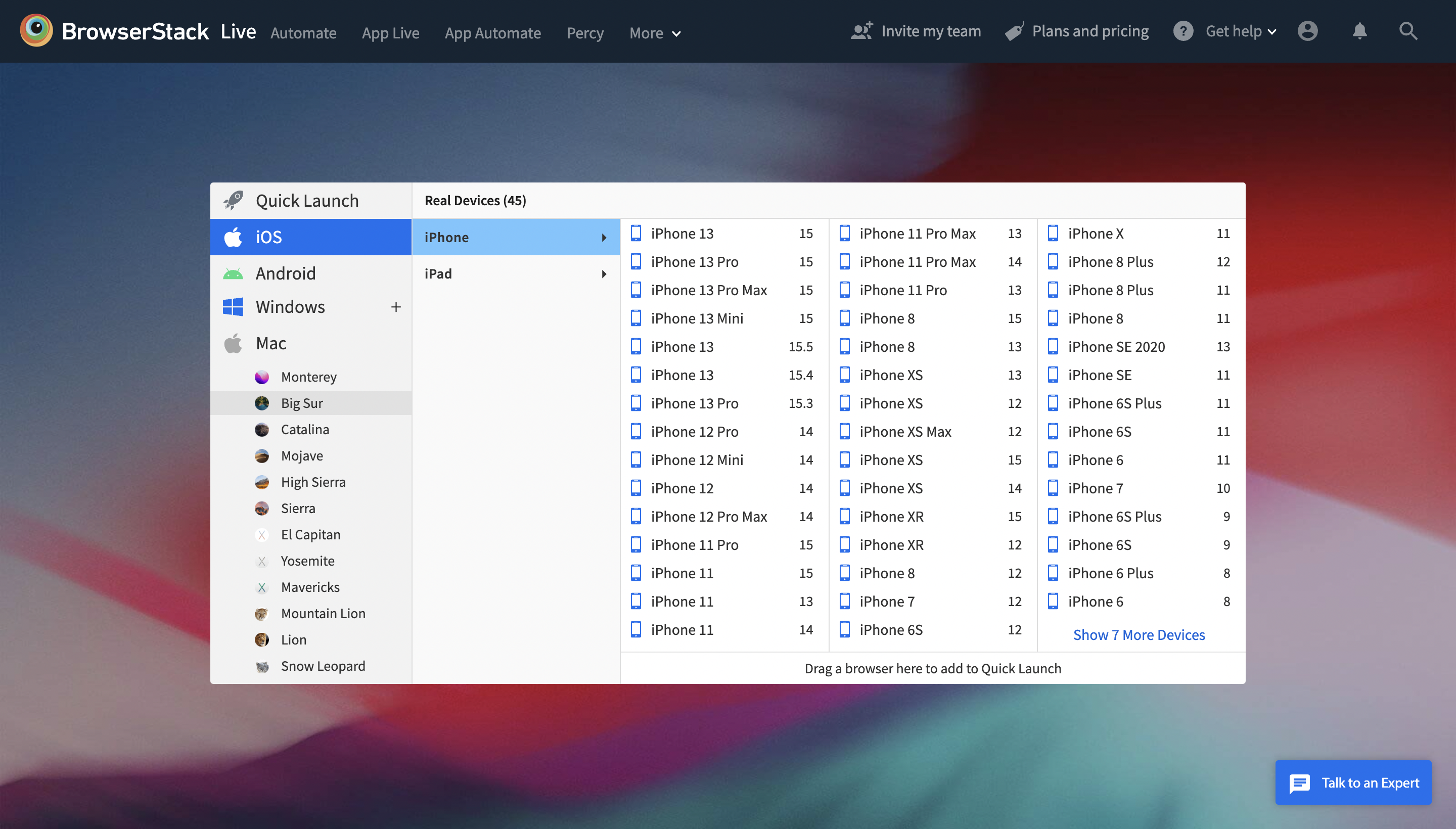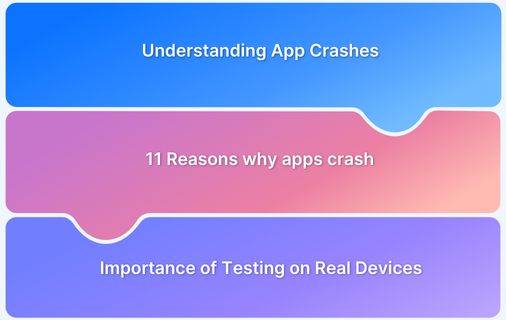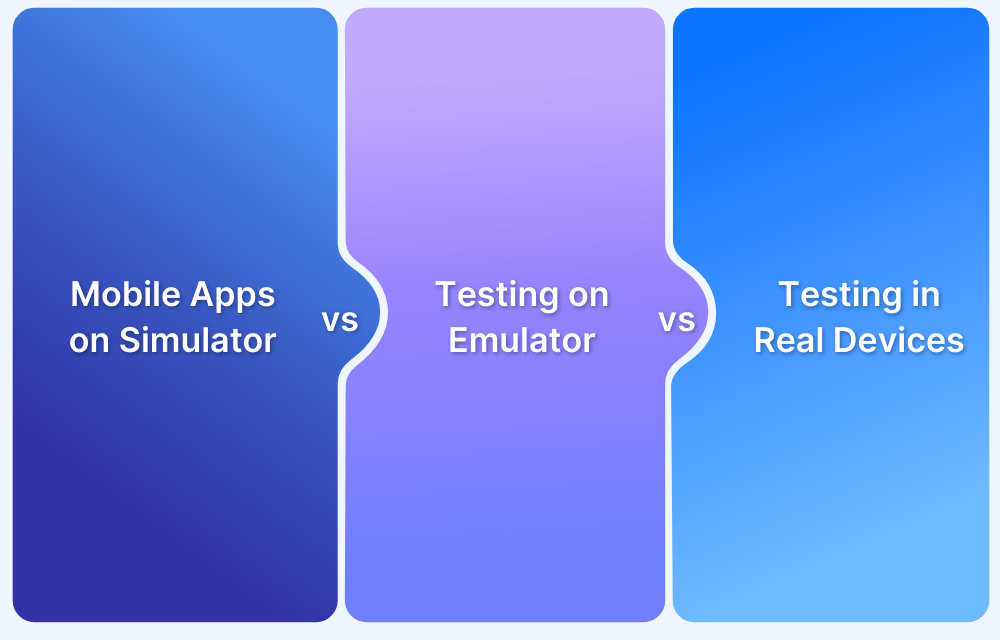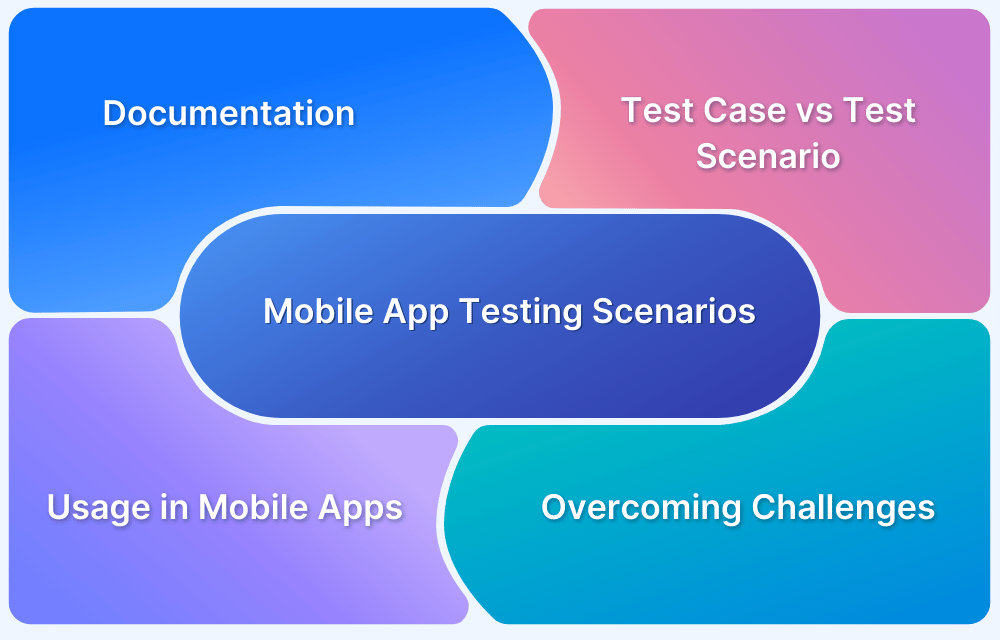Best Practices for Mobile App Testing
By Neha Bharati, Community Contributor - November 19, 2024
With users expecting flawless performance and a seamless experience in mobile apps, even minor issues can lead to poor reviews, uninstalls, and lost revenue. Effective mobile app testing helps identify and fix bugs, enhance app reliability, and maintain a competitive edge.
This guide takes you through some of the essential mobile testing best practices to give an unmatched user experience.
What is Mobile App Testing?
Mobile app testing is the process of evaluating a mobile application to ensure it meets quality standards, performs reliably, and delivers a seamless user experience.
It involves testing the app’s functionality, performance, usability, compatibility, and security across different devices, operating systems, and network conditions.
The main goal of mobile app testing is to ensure a smooth, satisfying experience for every user.
Why is Mobile App Testing Essential?
With so many apps available, a bug-free, smooth experience can set yours apart. Mobile app testing is a must, as it helps meet the requirements given below:
- Great User Experience: Users expect apps to be easy to use and error-free.
- Compatibility Across Devices: Apps must work well on all kinds of devices, from older models to the latest releases.
- Stable Performance: Apps should run smoothly, even when network conditions vary or usage spikes.
- Data Security: Users want their data protected, and thorough testing can catch security issues before they’re a problem.
- Better Reviews and Ratings: A high-performing app gets better reviews, leading to more downloads and success.
Types of Mobile Application Testing
There are different tests run on mobile applications to test the overall health of any application. Naturally, these tests also serve as part of best practices for mobile app testing.
- Functional Testing: It tests the overall functionality of any mobile app
- Regression Testing: Throughout the life cycle of a mobile app, many features and micro functionalities will be added later on, which may cause bugs. Regression testing helps identify such bugs in functional and non-functional areas
- Security Testing: Users prefer to use secure mobile applications and prevent attackers from hacking into their personal data. Experts best do this kind of testing because it can get complex and require knowledge about client-server communication, software architecture, and system architecture.
- Usability Testing: It is important to test the user experience of any mobile app to ensure that it functions in the desired way that was originally intended.
- Compatibility Testing: This is done to test whether the mobile app behaves as expected across different mobile devices and browsers. Testing infrastructure like BrowserStack provides a real-device cloud where mobile apps can be tested for cross-compatibility issues. Testing your native and hybrid apps on real mobile and tablet devices for the most accurate testing results becomes easier and more effective.
- Visual Testing: Visual testing ensures that an app looks as intended across different devices and screen sizes. It checks for layout issues, font consistency, color accuracy, and image clarity to provide a professional look. This testing is essential for creating a visually appealing and user-friendly experience, no matter where or how users access the app.
- Performance Testing: Performance testing evaluates the app’s speed, stability, and responsiveness under various conditions. It tests how the app behaves under different loads, network speeds, and usage scenarios, ensuring it runs smoothly and doesn’t lag or crash during high traffic or poor connections.
- Localization Testing: Localization testing verifies that all text, date formats, currencies, and images are correctly displayed and relevant to the user’s location, offering a comfortable and localized experience to users around the world.
Challenges in Mobile App Testing
Before diving into the mobile app testing best practices, let’s understand the challenges faced by mobile app testing
- Different Data Connections: As we know, mobile devices latch on to different network speeds (3G, 4G, etc) based on their availability and WiFi. The testers should test their applications under such network conditions and make sure that they run under a bad or unstable network. BrowserStack lets you do this with a feature called Network Simulation which allows network throttling to test mobile applications under real-world context.
- Device Fragmentation: Device fragmentation refers to the wide variety of devices available for use in the market at any given time. The number of active devices running an app at a given time keeps increasing every year. It is up to the testing teams to ensure that their apps work on different operating systems like Android and iOS across different browser combinations.
- Third-Party Integrations: Most applications use in-built functionalities of devices, like SMS or third-party services for analytics and crash reporting. The testers should ensure that their apps work seamlessly with such services. This task can increase the workload to test the mobile application adequately. Want to know 5 Reasons Why Mobile Apps Crash?
- Processing Power: Gaming apps and video streaming significantly affect battery life. Apart from this, users use many apps that run in the background, which requires CPU cycles. A dedicated device lab is required to test the effects of multiple cycles on the mobile application. This also requires time and effort and multiple iterations to ensure optimum power usage for the application.
Best Practices for Mobile App Testing
Now, that you’re aware of the challenges and types of testing that happens, here are the best practices that can be taken as a guideline for your QA team to make sure the testing process is not missing the important factors.
- Understand Your Mobile App: Before testing any application, it is important to understand the complete functionality of your app so that suitable test cases can be developed and your overall test coverage metrics are in good shape.
- Invest in Usability Testing: User experience is paramount for mobile apps. It can make or break the success of your brand as users always prefer apps that are easy to use and functional. Care should be taken while conducting mobile usability testing for best results.
- Test Under Real-Time Scenarios: It is crucial to test mobile apps under real-time conditions, including bad network conditions, different timezones, GPS locations, interruptions due to SMSes, low-battery warnings, etc. With BrowserStack you can go beyond the usual browser/OS/device testing and actually test under real user conditions such as natural app gestures/interactions, payment workflows, in-app purchases, geotargeting, and so on.
- Monitor Upgrades in Operating Systems: It would be detrimental for a mobile app if it doesn’t work when there is an OS upgrade. Hence testers should be on the lookout for upgrades and maintain the app accordingly. BrowserStack has the latest and widest range of OS-device-browser combinations. This makes it very handy for testers to test their application across recommended devices.
- Test Early, Test often: It is a good practice to have a test-driven approach where the application is tested right from the early stages and at different milestones of the project to build a stable and reliable application. Most of the features in an application can be automated which significantly reduces the testing time and efforts.
- Split the Testing Process: It is easier to break down the app testing into smaller units and test individually. These units can be to test certain functionalities or modules of the app. Splitting the tests helps in targeting all the app areas and exhaustive testing can be done.
- Focus on Real-Time Devices: No amount of emulator/simulator testing can pan up to testing on real devices. More emphasis should be put on testing with real devices, possibly using cloud testing platforms like BrowserStack. It is a cost-effective solution and a very popular choice among many testers.
Why perform Mobile App Testing on Real Devices?
Testing on real devices, instead of emulators, gives a clearer picture of how your app will perform for actual users. Here is why it is important:
- Real-World Performance: Real devices give accurate feedback on how the app will perform in users’ hands.
- Network Testing: Different networks mean different speeds and reliability. Testing on real devices captures this.
- Hardware Checks: Only real devices can accurately test battery usage, sensors, and touch response.
- Better User Experience: Real devices reveal user experience issues, like screen responsiveness and orientation handling.
Why choose BrowserStack for Mobile App Testing?
BrowserStack is a cloud testing platform that lets you test your app on real devices without needing to manage a device lab. Here’s why it’s a great choice:
- Huge Device Range: Test on a wide selection of 3500+ real devices-OS-browser combinations, covering popular brands, screen sizes, and OS versions.
- No Setup Needed: Test in the cloud without dealing with device setup and maintenance.
- Cross Browser Testing: Easily check compatibility across various browsers and OS combinations.
- Instant Bug Tracking: Built-in bug tracking makes it easy to spot and share issues.
- Test Real-Life Scenarios: Simulate network speeds, locations, and more to get real-world insights.
- Manual Testing and Automated Testing: Perform both manual tests for visual and usability checks and automated tests for quick, repetitive checks.
- iOS Testing and Android Testing: Seamlessly test across both iOS and Android, ensuring consistent performance on both platforms.
Conclusion
Mobile app testing works best with real devices compared to simulators or emulators.
For mobile apps, testing involves not only functional testing but also many other factors like network connectivity, gesture testing, and offline mode functionalities over multiple devices.
BrowserStack (App Live and App Automate) provides network simulation, geolocation testing, live debugging, and more on 3500+ real devices & browsers. Since it is an online cloud platform, it facilitates remote usability testing. Teams can test the application on their preferred devices and report their findings without much hassle.
Be it manual or automated testing, mobile app testing cannot be conducted without the right tools. Most teams do not have access to a device lab for real-world testing. Naturally, teams must turn to cloud-based options for testing.





